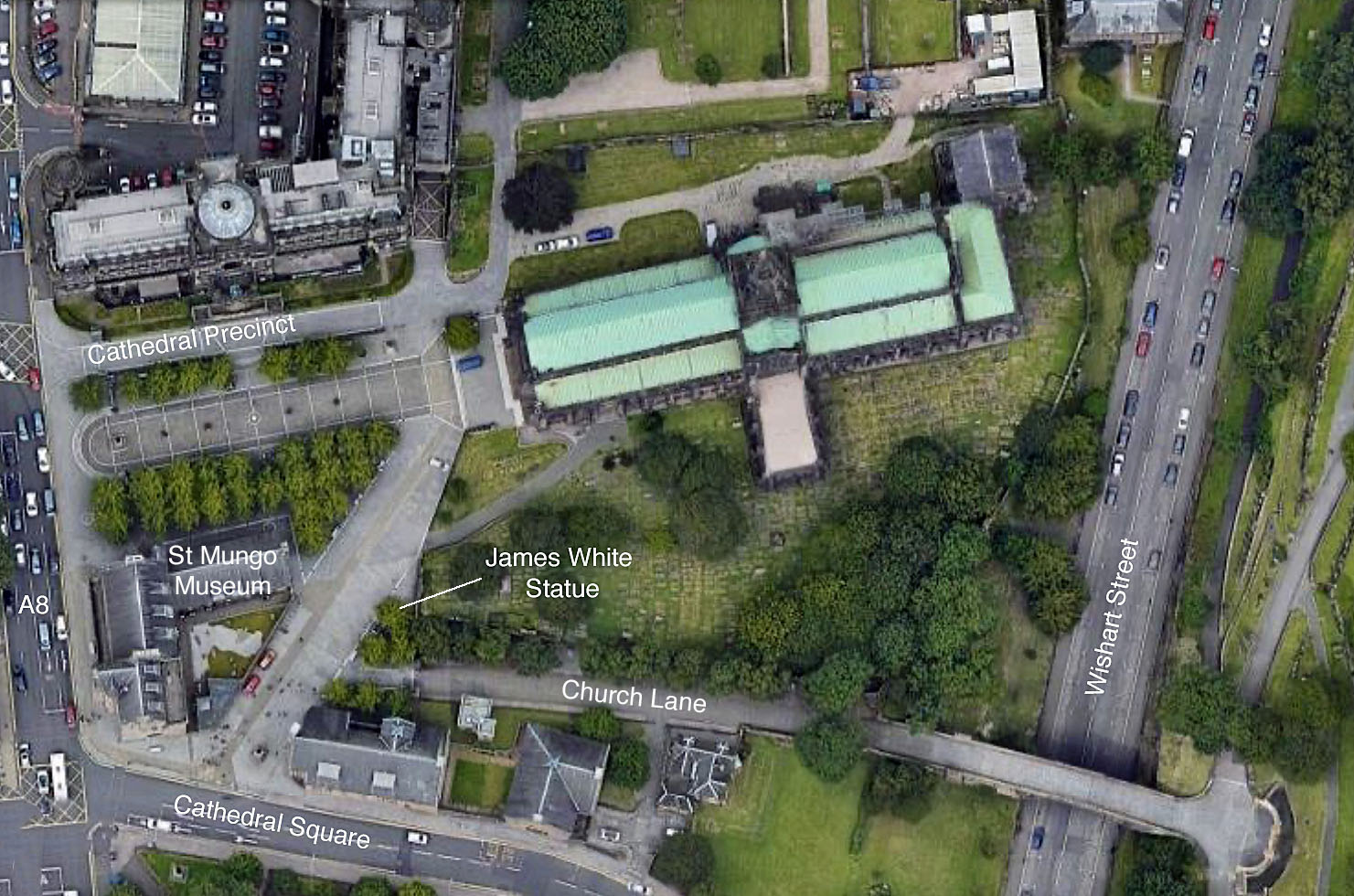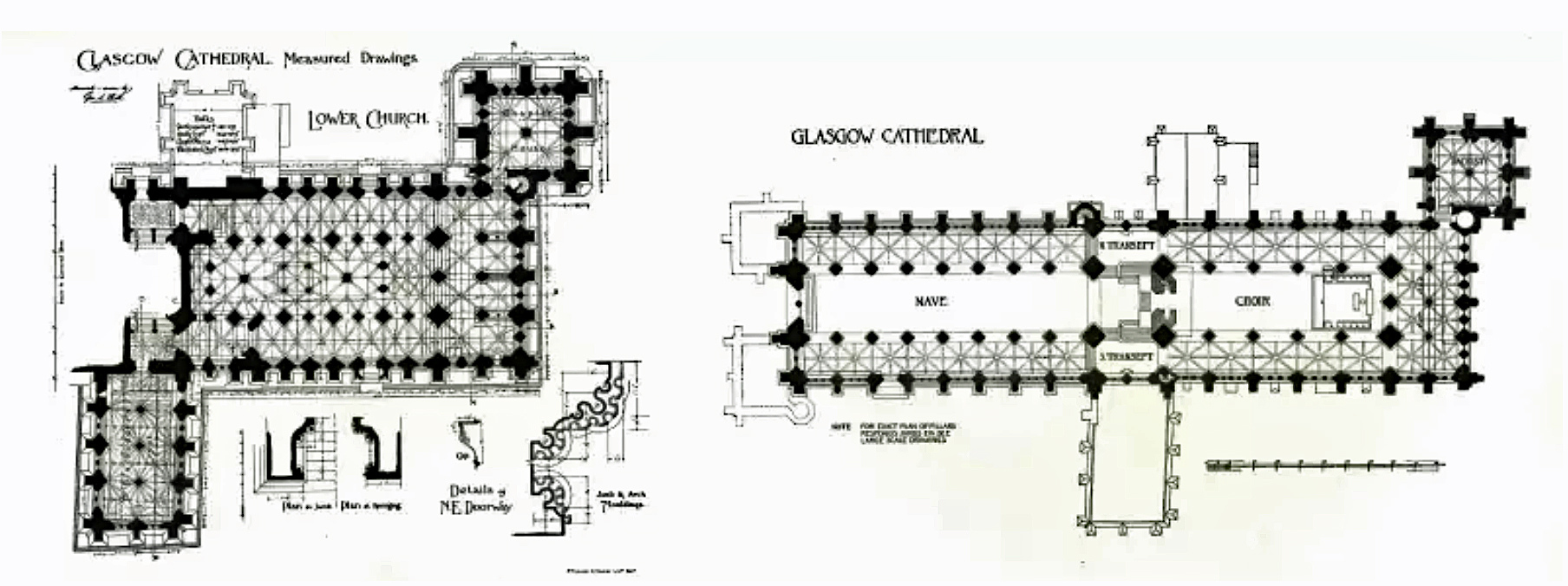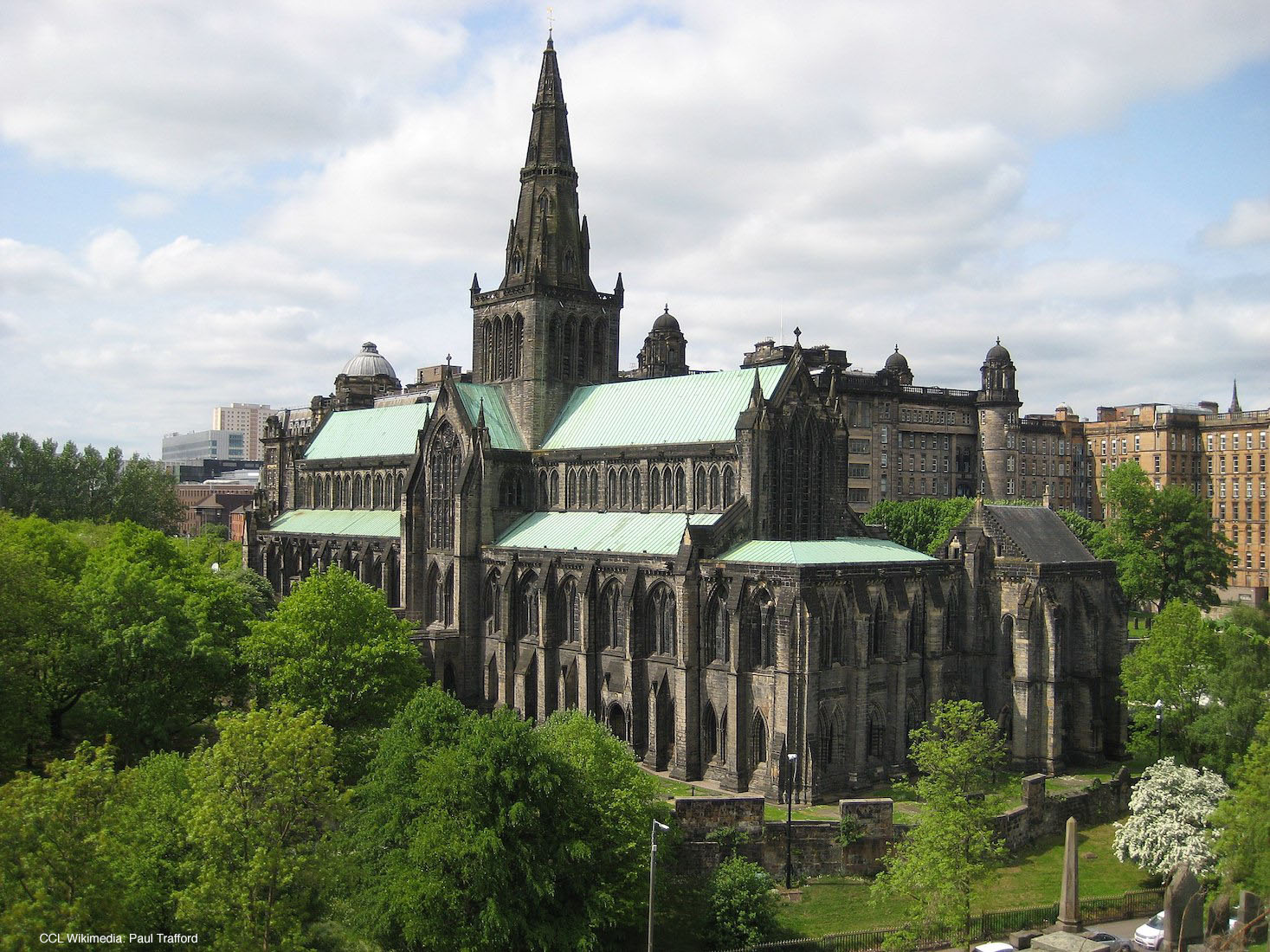This site on Glasgow Cathedral is the second in a series of websites on Scottish cathedrals. The main photographic contributors to this site are Ian Stubbs, Wendy Harris and Aidan McRae Thomson who have willingly supplied their fine photographs. Smaller numbers of photos have come from the Cathedral and Phil Brown. There are also several accredited photos under the Creative License scheme CCL, acknowledged in the text. The initials IS, WH, AMT, GC (Cathedral) and PB will denote our contributors. I have been delighted at how ready people have been to let me use their excellent photos. Further details about our contributors are given in the Conclusion.
A brief history of this Cathedral is given below. However, if you want to begin your tour of the Cathedral immediately, tap / click on START . You can also access intermediate points in the tour by a tap / click on the following links:
NOTE ON MAGNIFYING IMAGES
With this website format the images are large enough for most purposes. If there is a need for greater magnification of an image, go to the identical photo on the appropriate website listed in the Conclusion.

SATELLITE VIEW
Glasgow Cathedral, St Mungo’s, is situated about a kilometre east of the city centre, following out on Cathedral Street which runs directly into Cathedral Precinct on our map. The Cathedral sits in a very pleasant grassed area with headstones, and shielded from busy Wishart Street by a solid wall. Wishart Street is also at a lower level. East of Wishart Street is the Glasgow Necropolis – the large Glasgow Cemetery – which is of great interest in itself. To the southwest is the interesting St Mungo Museum.
The main axis of the Cathedral is geographically close to east – west, with the sanctuary to the east, so we can easily identify these directions with our liturgical notation East – West (with capital letters, and with the sanctuary due East).
The Cathedral is basically cruciform in shape with a central tower, and the transept largely concealed by nave and chancel aisles. The South transept has a long extension – the Blacader (Black Adder) aisle, and at the East end unusually have been added cross-wise several chapels leading to the Upper Chapter House in the Northeast corner. Not evident in the satellite view is the fact that the Cathedral is basically two-storeyed, with an Upper Kirk and a Lower Kirk (a large and spacious crypt).
PLAN

At first sight this plan does not appear to be very helpful, but we can see how the Lower Church at left, fits beneath the right end of the Upper Church (shown at right).
To understand the layout of this Cathedral more easily, we have divided the presentation into the following sections: Exterior, Nave, Blacader Aisle, Crypt, Crossing and Transepts, Quire, and Upper Chapter house.
HISTORY
Years Built: 1174 and following
Address: Cathedral Precinct, Glasgow.
Early history
Glasgow Cathedral stands near the heart of Scotland’s largest city. It is the only medieval cathedral on the Scottish mainland to have survived the Protestant Reformation of 1560 virtually intact. Around it there used to be a chanonry – a precinct where the bishops (and, later, archbishops) and clergy lived. A thriving burgh sprang up to its south and west under the bishops’ patronage. Since then, the burgh has grown into the great metropolis we know today.
This inspiring edifice dates mostly from the 1200s. It was dedicated to St Kentigern, also known as St Mungo. Kentigern is believed to have been the first bishop of the area that is modern Strathclyde. His influence spread widely, and it was later claimed he led a diocese stretching from Loch Lomond to Cumbria. It’s thought that Kentigern was buried on the cathedral site around 612.
Glasgow Cathedral is one of the finest buildings of the 1200s to survive in mainland Scotland. Parts of it are older still. Building fabric from Bishop Jocelin’s time (1174–99) is still standing. He is recorded as ‘gloriously enlarging’ his cathedral in 1181. Fragments from the previous cathedral have also been found. When a fire halted Jocelin’s work, it fell to his successors – notably Bishop William de Bondington (1233–58) – to finish the cathedral.
The end result was a Gothic creation consisting of: • rows of pointed arches • windows with slender tracery (stone divisions) • an unusual array of three vaulted aisles around the presbytery and choir.
The intention was to house a shrine to St Kentigern at the main level, behind the high altar, to complement the saint’s tomb in the crypt beneath.
Reform and reuse
The Reformation removed the need for bishops answerable to the Pope. Until their final abolition in 1689, bishops continued in the church in Scotland, but their role was greatly reduced.
Glasgow Cathedral was ‘cleansed’ of its Catholic trappings and put to use as a parish kirk – in fact, three parish kirks. The choir housed the Inner High Kirk; the west end of the nave, the Outer High Kirk; and the crypt, the Barony Kirk.
But a growing appreciation of the qualities of medieval architecture led to another change. By 1835, both the Outer High Kirk and the Barony Kirk had left the premises. This left the great medieval cathedral to return to something approaching its former glory.
In 1836, the cathedral became State property. By 1857, the entire building was looked after by the State. A campaign of restoration began and continues to this day.
https://www.historicenvironment.scot/visit-a-place/places/glasgow-cathedral/history/
Kentigern (Welsh: Cyndeyrn Garthwys; Latin: Kentigernus), known as Mungo, was a missionary in the Brittonic Kingdom of Strathclyde in the late sixth century, and the founder and patron saint of the city of Glasgow.
In Wales and England, this saint is known by his birth and baptismal name Kentigern (Welsh: Cyndeyrn). This name probably comes from the British Cuno-tigernos, which is composed of the elements cun, a hound, and tigerno, a lord, prince, or king.
Particularly in Scotland, he is known by the pet name Mungo, possibly derived from the Cumbric equivalent of the Welsh: fy nghu ‘my dear (one)’.
In the Life of Saint Mungo, he performed four miracles in Glasgow. The following verse is used to remember Mungo’s four miracles:
Here is the bird that never flew
Here is the tree that never grew
Here is the bell that never rang
Here is the fish that never swam.
The verses refer to the following:
• The Bird: Mungo restored life to a robin, that had been killed by some of his classmates.
• The Tree: Mungo had been left in charge of a fire in Saint Serf’s monastery. He fell asleep and the fire went out. Taking a hazel branch, he restarted the fire.
• The Bell: the bell is thought to have been brought by Mungo from Rome. It was said to have been used in services and to mourn the dead. The original bell no longer exists, and a replacement, created in the 1640s, is now on display in Glasgow.
• The Fish: refers to the story about Queen Languoreth of Strathclyde who was suspected of infidelity by her husband. King Riderch demanded to see her ring, which he claimed she had given to her lover. In reality the King had thrown it into the River Clyde. Faced with execution she appealed for help to Mungo, who ordered a messenger to catch a fish in the river. On opening the fish, the ring was miraculously found inside, which allowed the Queen to clear her name. (This story may be confused with an almost identical one concerning King Maelgwn of Gwynedd and Saint Asaph.)
https://en.wikipedia.org/wiki/Saint_Mungo



